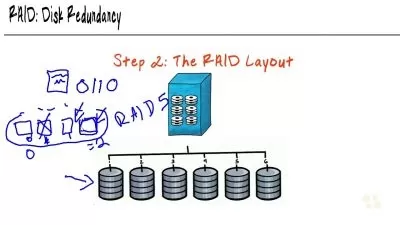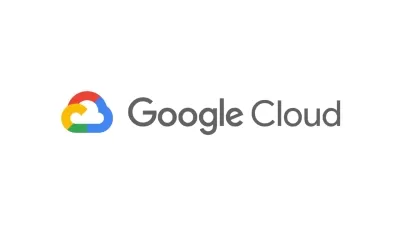DuckDB in Action, Video Edition
Focused View
7:39:53
0 View
001. Chapter 1. An introduction to DuckDB.mp4
04:58
002. Chapter 1. Why should you care about DuckDB.mp4
02:27
003. Chapter 1. When should you use DuckDB.mp4
01:47
004. Chapter 1. When should you not use DuckDB.mp4
01:26
005. Chapter 1. Use cases.mp4
02:16
006. Chapter 1. Where does DuckDB fit in.mp4
01:56
007. Chapter 1. Steps of the data processing flow.mp4
08:36
008. Chapter 1. Summary.mp4
01:05
009. Chapter 2. Getting started with DuckDB.mp4
01:38
010. Chapter 2. Installing the DuckDB CLI.mp4
01:03
011. Chapter 2. Using the DuckDB CLI.mp4
03:46
012. Chapter 2. DuckDB s extension system.mp4
02:24
013. Chapter 2. Analyzing a CSV file with the DuckDB CLI.mp4
06:19
014. Chapter 2. Summary.mp4
00:46
015. Chapter 3. Executing SQL queries.mp4
03:06
016. Chapter 3. Analyzing energy production.mp4
07:02
017. Chapter 3. Data definition language queries.mp4
10:44
018. Chapter 3. Data manipulation language queries.mp4
34:00
019. Chapter 3. DuckDB-specific SQL extensions.mp4
12:44
020. Chapter 3. Summary.mp4
01:18
021. Chapter 4. Advanced aggregation and analysis of data.mp4
04:41
022. Chapter 4. Summarizing data.mp4
01:10
023. Chapter 4. On subqueries.mp4
07:28
024. Chapter 4. Grouping sets.mp4
04:36
025. Chapter 4. Window functions.mp4
15:03
026. Chapter 4. Conditions and filtering outside the WHERE clause.mp4
05:50
027. Chapter 4. The PIVOT statement.mp4
05:33
028. Chapter 4. Using the ASOF JOIN.mp4
03:52
029. Chapter 4. Using table functions.mp4
04:11
030. Chapter 4. Using LATERAL joins.mp4
05:05
031. Chapter 4. Summary.mp4
01:30
032. Chapter 5. Exploring data without persistence.mp4
03:42
033. Chapter 5. Inferring file type and schema.mp4
06:00
034. Chapter 5. Shredding nested JSON.mp4
09:31
035. Chapter 5. Translating CSV to Parquet.mp4
09:48
036. Chapter 5. Analyzing and querying Parquet files.mp4
06:25
037. Chapter 5. Querying SQLite and other databases.mp4
05:22
038. Chapter 5. Working with Excel files.mp4
02:47
039. Chapter 5. Summary.mp4
01:16
040. Chapter 6. Integrating with the Python ecosystem.mp4
05:58
041. Chapter 6. Using the relational API.mp4
18:51
042. Chapter 6. Querying pandas DataFrames.mp4
03:05
043. Chapter 6. User-defined functions.mp4
08:32
044. Chapter 6. Interoperability with Apache Arrow and Polars.mp4
05:04
045. Chapter 6. Summary.mp4
01:12
046. Chapter 7. DuckDB in the cloud with MotherDuck.mp4
06:23
047. Chapter 7. Getting started with MotherDuck.mp4
05:24
048. Chapter 7. Making the best possible use of MotherDuck.mp4
21:55
049. Chapter 7. Summary.mp4
01:11
050. Chapter 8. Building data pipelines with DuckDB.mp4
04:53
051. Chapter 8. Data ingestion with dlt.mp4
08:10
052. Chapter 8. Data transformation and modeling with dbt.mp4
13:35
053. Chapter 8. Orchestrating data pipelines with Dagster.mp4
15:30
054. Chapter 8. Summary.mp4
00:54
055. Chapter 9. Building and deploying data apps.mp4
20:26
056. Chapter 9. Building a BI dashboard with Apache Superset.mp4
14:27
057. Chapter 9. Summary.mp4
01:03
058. Chapter 10. Performance considerations for large datasets.mp4
28:49
059. Chapter 10. Query planning and execution.mp4
05:57
060. Chapter 10. Exporting the Stack Overflow data to Parquet.mp4
05:00
061. Chapter 10. Exploring the New York Taxi dataset from Parquet files.mp4
13:35
062. Chapter 10. Summary.mp4
01:16
063. Chapter 11. Conclusion.mp4
01:53
064. Chapter 11. Upcoming stable versions of DuckDB.mp4
00:37
065. Chapter 11. Aspects we did not cover.mp4
02:28
066. Chapter 11. Where can you learn more.mp4
00:45
067. Chapter 11. What is the future of data engineering with DuckDB.mp4
01:53
068. appendix A. Client APIs for DuckDB.mp4
05:14
069. appendix A. A word on concurrency.mp4
02:00
070. appendix A. Use cases.mp4
02:28
071. appendix A. Importing large amounts of data.mp4
01:12
072. appendix A. Using DuckDB from Java via the JDBC Driver.mp4
14:26
073. appendix A. Additional connection options.mp4
01:42
074. appendix A. Summary.mp4
00:54
More details
User Reviews
Rating
average 0
Focused display
Category

O'Reilly
View courses O'ReillyO'Reilly Media is an American learning company established by Tim O'Reilly that publishes books, produces tech conferences, and provides an online learning platform. Its distinctive brand features a woodcut of an animal on many of its book covers.
- language english
- Training sessions 74
- duration 7:39:53
- Release Date 2025/01/15









